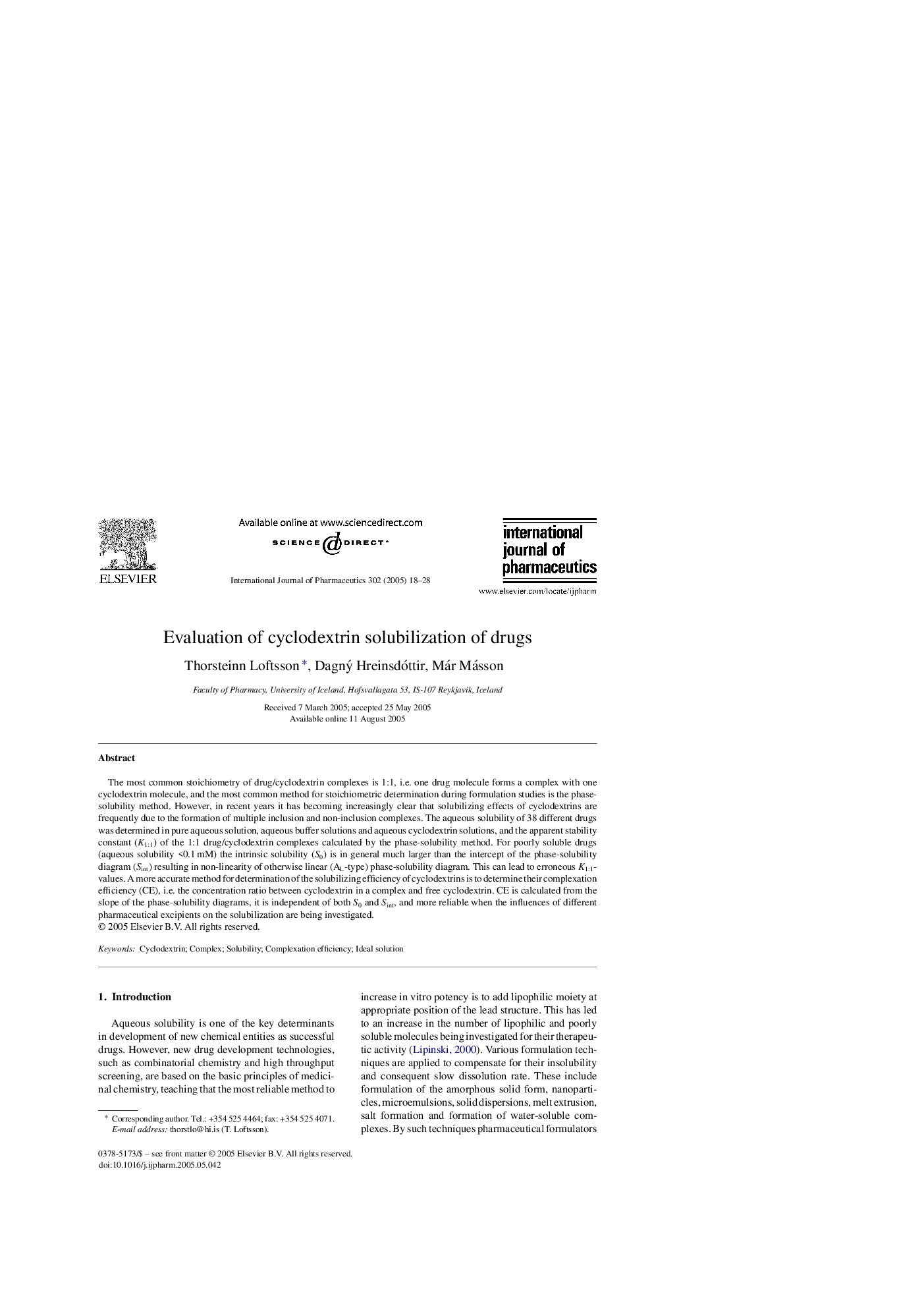| Article ID | Journal | Published Year | Pages | File Type |
|---|---|---|---|---|
| 9918616 | International Journal of Pharmaceutics | 2005 | 11 Pages |
Abstract
The most common stoichiometry of drug/cyclodextrin complexes is 1:1, i.e. one drug molecule forms a complex with one cyclodextrin molecule, and the most common method for stoichiometric determination during formulation studies is the phase-solubility method. However, in recent years it has becoming increasingly clear that solubilizing effects of cyclodextrins are frequently due to the formation of multiple inclusion and non-inclusion complexes. The aqueous solubility of 38 different drugs was determined in pure aqueous solution, aqueous buffer solutions and aqueous cyclodextrin solutions, and the apparent stability constant (K1:1) of the 1:1 drug/cyclodextrin complexes calculated by the phase-solubility method. For poorly soluble drugs (aqueous solubility <0.1Â mM) the intrinsic solubility (S0) is in general much larger than the intercept of the phase-solubility diagram (Sint) resulting in non-linearity of otherwise linear (AL-type) phase-solubility diagram. This can lead to erroneous K1:1-values. A more accurate method for determination of the solubilizing efficiency of cyclodextrins is to determine their complexation efficiency (CE), i.e. the concentration ratio between cyclodextrin in a complex and free cyclodextrin. CE is calculated from the slope of the phase-solubility diagrams, it is independent of both S0 and Sint, and more reliable when the influences of different pharmaceutical excipients on the solubilization are being investigated.
Related Topics
Health Sciences
Pharmacology, Toxicology and Pharmaceutical Science
Pharmaceutical Science
Authors
Thorsteinn Loftsson, Dagný Hreinsdóttir, Már Másson,
